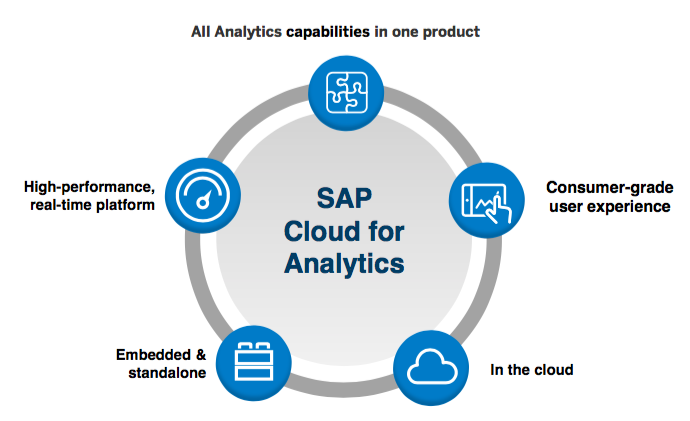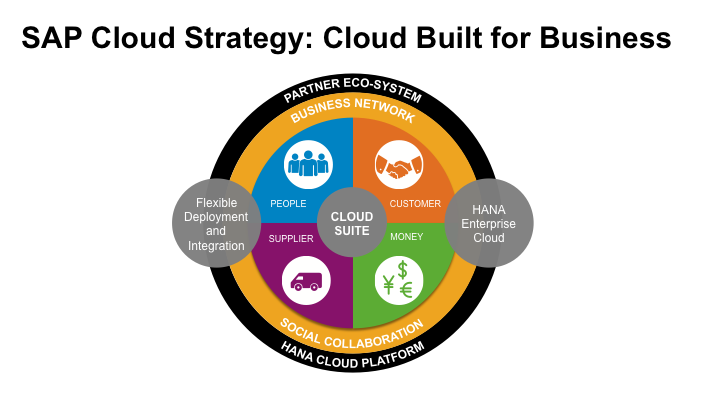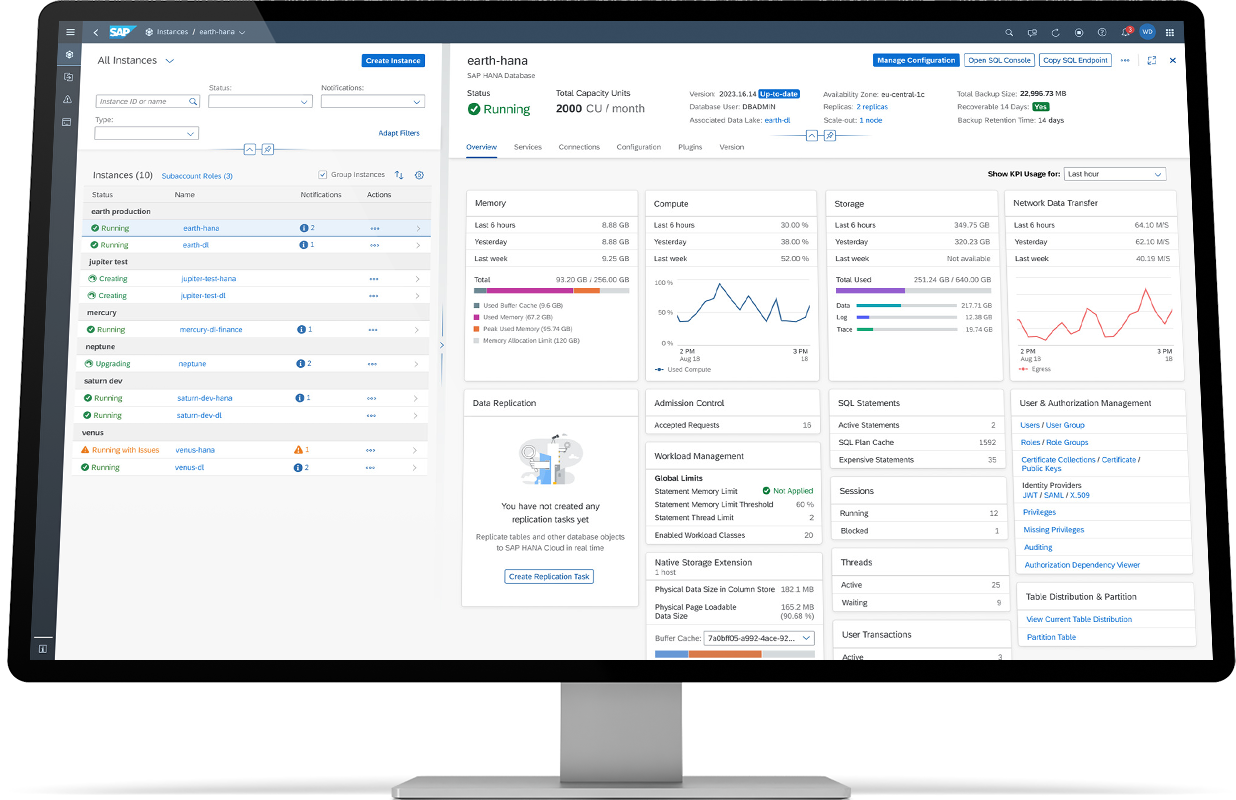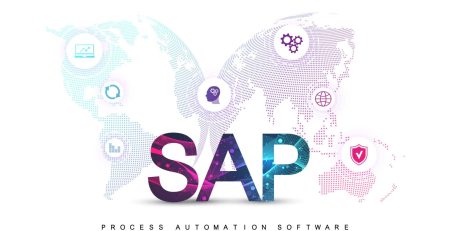Unlocking Success: Harnessing the Potential of SAP Cloud Computing
Unlock business innovation with SAP cloud computing: explore its potential, industry adaptations, and future trends.
Unlocking Success: Harnessing the Potential of SAP Cloud Computing
Introduction to SAP Cloud Computing
As we delve into the world of SAP cloud computing, it’s essential to understand what it is and how it’s evolved over the years. This powerful platform has transformed the way businesses operate, driving innovation, and efficiency in various industries.
SAP Cloud: What It Is and What It Can Do
At its core, SAP Cloud is a cloud-based platform designed to provide businesses with the flexibility and scalability they need to adapt to changing market dynamics. This platform facilitates more efficient data management and promotes enhanced collaboration and integration across business functions.
SAP Cloud serves as the foundation for a range of applications, including those related to analytics, customer engagement, HR, finance, and more. With its robust capabilities, SAP Cloud plays a crucial role in driving digital transformation, helping businesses transition from traditional on-premise systems to more agile, cloud-based models. For a more detailed exploration of this topic, I recommend reading sap digital transformation.
The Evolution of SAP Cloud Computing
The journey of SAP Cloud has been one of continuous innovation and growth. Initially, SAP’s foray into cloud computing was driven by the need to provide users with the ability to access applications and data from anywhere, at any time. Over time, as the potential of cloud technology became more evident, SAP expanded its cloud offerings, developing a comprehensive suite of cloud-based solutions that cater to various business needs.
Today, SAP Cloud has evolved into a platform that not only supports operational efficiency but also fosters innovation. It serves as the backbone for the intelligent enterprise, enabling businesses to leverage advanced technologies such as AI, machine learning, and IoT to drive growth and competitiveness. For more insights into this, you may want to read sap intelligent enterprise.
In summary, SAP Cloud is more than just a technological tool — it’s a strategic enabler that helps businesses unlock new opportunities, streamline processes, and make more informed decisions. As we move forward, I believe that SAP Cloud will continue to play a pivotal role in shaping the future of business, driving innovation, and enabling industry-specific adaptations. To understand more about the potential of this technology, explore our coverage on sap cloud solutions.
The Potential of SAP Cloud Computing
When we talk about the potential of SAP cloud computing, three major attributes come to the forefront: scalability and flexibility, improved data management, and enhanced collaboration and integration.
Scalability and Flexibility
The scalability and flexibility offered by SAP cloud computing are unparalleled. With traditional on-premise systems, scaling up or down could be a lengthy and costly process. However, with SAP cloud solutions, businesses can easily adjust their resource usage in response to their needs.
For example, during peak business periods, companies can scale up their computing resources to handle the increased load. Conversely, during slower periods, they can scale down to save costs. This level of flexibility ensures that businesses only pay for what they use, leading to significant cost savings.
Improved Data Management
Data is the lifeblood of any modern business. With the advent of SAP cloud computing, managing this invaluable resource has become more efficient. The cloud-based nature of SAP solutions ensures that businesses can access their data from anywhere, at any time. This real-time access to data can significantly improve decision-making and operational efficiency.
Moreover, SAP cloud computing also provides robust data security measures. These include data encryption, access control, and regular security updates, which help ensure that your business data remains secure.

Enhanced Collaboration and Integration
An integral part of SAP cloud computing is its ability to enhance collaboration and integration. With cloud-based SAP solutions, teams can collaborate more effectively, regardless of their geographical locations. By providing a centralized platform for data and applications, SAP cloud promotes better communication and coordination among teams.
Furthermore, SAP cloud computing allows for seamless integration with a wide range of other software and platforms. This means businesses can leverage the best tools for their specific needs, without worrying about compatibility issues.
In the modern business landscape, the ability to quickly adapt and innovate is crucial. By harnessing the potential of SAP cloud computing, businesses can not only improve their operations and efficiency but also drive innovation and growth. For more insights into how SAP is driving innovation in the cloud, check out our article on sap innovations.

Role of SAP Cloud Computing in Business Innovation
The influence of SAP Cloud Computing in the realm of business innovation is remarkable. It is a game-changer that allows businesses to redefine their operations, processes, and strategies.
How SAP Cloud Drives Innovation
SAP Cloud Computing propels innovation by offering robust, flexible, and scalable solutions for businesses. It fosters an environment that facilitates seamless collaboration, improved data management, and unlimited scalability.
One of the key advantages of SAP Cloud is the ability to implement and test innovative ideas rapidly. With traditional on-premise systems, testing a new business process or application may require considerable time and resources. However, in the SAP Cloud environment, new applications can be deployed and tested quickly, fostering an innovative mindset within the organization.
Moreover, SAP Cloud provides businesses with access to the latest technologies such as AI, machine learning, and advanced analytics. These technologies play a crucial role in driving digital transformation and building the intelligent enterprise.
By leveraging SAP Cloud, businesses can innovate continuously and stay ahead of the competition. For a more in-depth look at how SAP Cloud drives innovation, check out our article on sap innovations.
Real-World Examples of SAP Cloud Innovation
Several businesses across various industries have reaped the benefits of SAP Cloud. Here are a few examples:
- Manufacturing Industry: A prominent manufacturing company has leveraged SAP Cloud to streamline its supply chain process. By integrating real-time data analytics, the company has been able to optimize logistics, reduce costs, and improve customer satisfaction.
- Finance Sector: A leading bank used SAP Cloud for its core banking solutions. It resulted in improved data security, faster transaction processing, and enhanced customer service.
- Healthcare Industry: A healthcare provider implemented SAP Cloud to manage patient data efficiently. This has improved patient care by providing real-time access to patient records, aiding in quick decision-making.
| Industry | Use of SAP Cloud |
|---|---|
| Manufacturing | Streamlining supply chains |
| Finance | Enhancing core banking solutions |
| Healthcare | Efficient patient data management |
These real-world examples illustrate how SAP Cloud is driving innovation in diverse industries. The potential of SAP Cloud Computing in business innovation is vast and continues to grow. To learn more about how businesses can harness the power of SAP Cloud, check out our article on sap cloud solutions.
Embracing Industry-Specific SAP Cloud Adaptations
Recognizing that organizations across different industries have unique needs, SAP cloud computing has made significant strides in offering industry-specific solutions. These solutions aim to address unique challenges, streamline operations, and drive innovation.
Industry-Specific Cloud Solutions
The industry-specific cloud solutions offered by SAP are designed to cater to the unique needs and pain points of different sectors. From healthcare and manufacturing to retail and logistics, SAP has developed tailored cloud solutions that can drive digital transformation and deliver an intelligent enterprise.
For instance, in the healthcare industry, SAP cloud solutions can streamline patient data management, enhance patient care, and help providers comply with stringent regulatory requirements. On the other hand, for the retail sector, an SAP cloud solution could optimize inventory management, enhance customer experience, and drive sales.
To get the most out of these industry-specific cloud solutions, businesses should align their SAP cloud migration strategy with their unique industry requirements, regulatory landscape, and business objectives. For more insights on this, check out our guide on SAP cloud migration.
The Future of SAP Cloud in Different Industries
Moving forward, I foresee SAP cloud computing playing an even more significant role in various industries. With emerging trends such as machine learning, artificial intelligence, and big data analytics, the potential for industry-specific SAP cloud solutions is immense.
For example, in the manufacturing sector, SAP cloud can enhance predictive maintenance, improve supply chain management, and drive Industry 4.0 initiatives. In the finance industry, SAP cloud can streamline operations, enhance risk management, and deliver real-time financial insights.

| Industry | Future SAP Cloud Applications |
|---|---|
| Manufacturing | Predictive maintenance, supply chain management, Industry 4.0 |
| Finance | Streamlined operations, risk management, real-time financial insights |
| Healthcare | Patient data analytics, regulatory compliance, telemedicine |
| Retail | Personalized marketing, omnichannel retailing, customer experience enhancement |
To stay ahead of the curve, businesses should continuously explore how they can leverage the latest SAP innovations to drive their digital transformation journey. For more insights on the latest SAP trends and innovations, check out our article on SAP innovations.
In the end, the key to harnessing the full potential of SAP cloud computing lies in understanding your industry’s unique needs, staying abreast of the latest SAP trends, and aligning your SAP strategy with your overall business objectives.
GETTING STARTED
Transform Your Business Today - Get Your Custom Quote Now
- Tailored Solutions: Receive a personalized quote that aligns perfectly with your business needs and goals.
- Expert Guidance: Leverage Orlando Monteiro's extensive experience in business transformation and digital innovation.
- Cost-Effective Strategies: Discover how you can optimize your operations and reduce costs with our expert solutions.
- Immediate Impact: Start seeing tangible results in your business efficiency and productivity right away.
- Long-Term Success: Embark on a journey towards sustainable growth and competitive advantage with our strategic guidance.
Enter Details in This Form:
Challenges and Solutions in SAP Cloud Adoption
While the benefits of SAP cloud computing are numerous, the journey to full adoption can come with certain challenges. By being aware of these potential pitfalls and implementing best practices, businesses can successfully navigate the migration process and fully harness the power of SAP cloud.
Common Challenges in Adoption
Resistance to change is often one of the main obstacles in the adoption of new technologies like SAP cloud. Employees may be comfortable with the existing systems and processes, making them reluctant to shift to a new platform.
Security concerns are another major challenge. Many businesses worry about the security of their data in the cloud. While SAP cloud provides robust security measures, businesses must also do their part in ensuring data protection.
Lastly, lack of expertise can hinder the successful implementation of SAP cloud. The transition requires a deep understanding of the technology and its application in the business context.
| Challenges | Description |
|---|---|
| Resistance to Change | Employees’ comfort with existing systems can make them reluctant to adopt new technologies |
| Security Concerns | Businesses may have concerns about the security of their data in the cloud |
| Lack of Expertise | Successful implementation requires a deep understanding of the technology |
Best Practices for Successful Implementation
To overcome these challenges, it’s important to follow best practices.
Start with a clear migration strategy. This should include a detailed plan outlining the steps for SAP cloud migration, along with timelines and expected outcomes.
Next, address security concerns by ensuring that all necessary security measures are in place. This includes setting up proper access controls, using encryption, and regularly monitoring for any potential threats.
Invest in training and support to help your team understand the benefits of SAP cloud and how to use it effectively. This will help to overcome resistance to change and ensure that your team has the necessary expertise to make the most of the technology.
Finally, involve all stakeholders in the migration process. This includes not only IT professionals but also business leaders and end-users who will be using the SAP cloud solutions.
By being aware of potential challenges and implementing these best practices, businesses can successfully navigate the SAP cloud adoption journey and unlock the full potential of this powerful technology. For more information on harnessing the power of SAP cloud for digital transformation, check out our other articles.
Shaping the Future with SAP Cloud Computing
As we dive deeper into the digital age, SAP Cloud Computing stands at the forefront of business innovation and transformation. The potential of SAP Cloud to shape the future of businesses is immense, and understanding its role in future business trends and how to prepare for it is essential.
The Role of SAP Cloud in Future Business Trends
In the future business landscape, SAP Cloud Computing will play a pivotal role in driving digital transformation, facilitating intelligent enterprises, and enabling industry-specific cloud solutions.
The digital transformation wave, powered by SAP Cloud, is set to revolutionize businesses across the globe. It offers a platform for businesses to move away from traditional, on-premise systems to more flexible, scalable, and integrated cloud solutions. This transition not only allows businesses to adapt to changing market dynamics but also provides a competitive edge. You can read more about this in our article on SAP digital transformation.
SAP Cloud is also the backbone of the intelligent enterprise, enabling businesses to leverage AI, machine learning, and advanced analytics to drive insightful decision-making and operational efficiency. By integrating these intelligent technologies into their operations, businesses can achieve unprecedented levels of automation and insight. Check out our article on SAP intelligent enterprise for more details.
Moreover, industry-specific SAP Cloud solutions are set to become the norm, with tailored functionalities catering to the unique needs of different industries. These solutions will enable businesses to streamline their operations and improve their service offerings, driving growth and success. You can learn more about this in our article on SAP cloud solutions.
How to Prepare for the Future with SAP Cloud
As SAP Cloud Computing continues to shape the future of businesses, it’s critical for organizations to adapt and prepare for these changes. Here are some steps you can take:
- Stay Informed: Keep abreast of the latest SAP Cloud trends and innovations. Understand how these changes can benefit your business. Our article on SAP innovations might be a useful resource.
- Plan Your Migration: If you haven’t already, consider moving your business processes to the cloud. A well-planned migration strategy is key to ensuring a smooth transition and maximizing the benefits of SAP Cloud. Our article on SAP cloud migration can guide you through this process.
- Invest in Skills and Training: As SAP Cloud technologies advance, it’s important for your team to have the necessary skills to harness their potential. Invest in training and development programs that focus on SAP Cloud.
- Embrace Innovation: Be open to new ways of doing things. Embrace the innovation that SAP Cloud brings to your business operations, processes, and culture.
By understanding the role of SAP Cloud in shaping future business trends and preparing for these changes, businesses can leverage the power of SAP Cloud Computing to drive innovation, enhance operational efficiency, and secure a competitive edge in the digital age.












Comments (2)
[…] Cloud solutions play a pivotal role in the SAP Intelligent Enterprise, providing organizations with the flexibility, scalability, and cost-effectiveness needed to thrive in today’s dynamic business environment. By harnessing the power of the cloud, businesses can leverage cutting-edge technologies, access real-time data, and achieve faster time-to-value. To learn more about the benefits of SAP cloud solutions, check out our article on SAP cloud computing. […]
[…] Note: If you want to learn more about SAP cloud computing and its role in digital transformation, check out our blog post on SAP Cloud Computing. […]